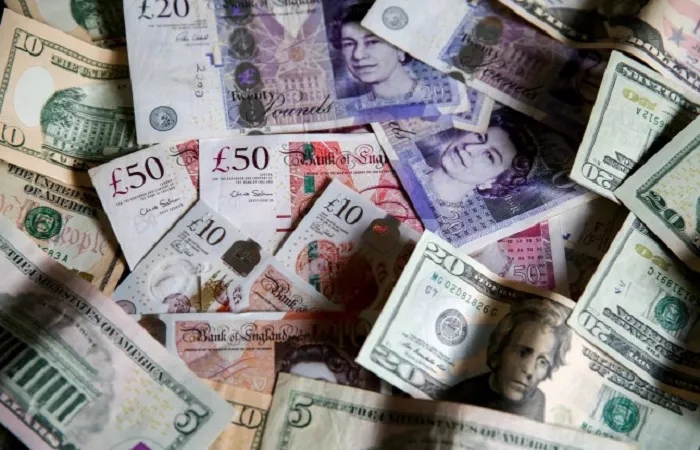The exchange rate between the US dollar (USD) and the British pound (GBP) represents one of the most closely watched currency pairs in the global foreign exchange market. Understanding the factors influencing the exchange rate, how it is determined, and the implications of fluctuations is crucial for businesses engaged in transatlantic trade, investors seeking to diversify portfolios, and individuals involved in cross – border transactions.
Basics of the USD/GBP Currency Pair
The Significance of the USD/GBP Pair
The USD/GBP pair, often referred to as “cable,” has a long – standing history. Historically, the term “cable” originated from the transatlantic cable that was used to transmit exchange rate information between London and New York. This pair is not only important due to the economic might of the United States and the United Kingdom but also because of the extensive trade and financial linkages between the two countries.
The US, with the world’s largest economy, and the UK, a major financial hub in Europe, conduct substantial trade in various sectors, including finance, technology, and manufacturing. As a result, the exchange rate between the dollar and the pound has a significant impact on the cost of goods and services traded between the two nations.
Quotation Conventions
In the foreign exchange market, the USD/GBP pair is quoted in a specific way. The exchange rate indicates how many pounds one can get for one US dollar. For example, if the USD/GBP exchange rate is 0.80, it means that 1 US dollar can be exchanged for 0.80 British pounds. A rise in the exchange rate implies that the dollar is strengthening against the pound, while a fall indicates that the pound is appreciating relative to the dollar.
Factors Influencing the USD/GBP Exchange Rate
Interest Rates
Central banks play a crucial role in determining interest rates. The Federal Reserve in the US and the Bank of England in the UK set monetary policies. When the Federal Reserve raises interest rates, US assets become more attractive to foreign investors. This leads to an increased demand for the US dollar as investors seek to invest in higher – yielding US assets. As a result, the value of the dollar rises relative to the pound. Conversely, if the Bank of England raises interest rates, British assets become more appealing, and the pound may appreciate against the dollar.
Inflation Rates
Inflation is another key factor. High inflation in the US erodes the purchasing power of the dollar. If the inflation rate in the US is higher than that in the UK, the relative value of the dollar decreases. Importers in the UK will find US goods more expensive, leading to a reduced demand for the dollar. On the other hand, if the UK experiences higher inflation, the pound may weaken against the dollar.
Gross Domestic Product (GDP)
The economic growth of both countries, as measured by GDP, affects the exchange rate. A strong GDP growth in the US indicates a healthy economy, which may attract foreign investment and drive up the value of the dollar. Similarly, robust economic growth in the UK can lead to an appreciation of the pound.
Political Stability
Political stability is essential for a strong currency. In the UK, events such as Brexit had a significant impact on the pound. The uncertainty surrounding the UK’s exit from the European Union led to a depreciation of the pound as investors became concerned about the future economic prospects of the country. In the US, political instability, such as during periods of government shutdowns or political scandals, can also affect the value of the dollar.
Trade Relations
Trade disputes between the US and the UK, or between the US and the European Union (which still has an impact on the UK due to its close economic ties) can influence the USD/GBP exchange rate. Tariffs and trade restrictions can disrupt trade flows, leading to changes in the demand for the two currencies.
How the Exchange Rate is Determined in the Market
The Role of the Foreign Exchange Market
The foreign exchange market is a decentralized global market where currencies are traded. It operates 24 hours a day, five days a week. In the USD/GBP market, the exchange rate is determined by the forces of supply and demand.
Large financial institutions, such as banks, hedge funds, and multinational corporations, are major players in the market. For example, a US – based multinational company that has significant operations in the UK may need to convert dollars into pounds to pay for local expenses. This increases the demand for pounds and can drive up the pound’s value relative to the dollar.
Market Speculation
Speculators also play a significant role in determining the exchange rate. They buy and sell currencies with the aim of making a profit from fluctuations in the exchange rate. If speculators anticipate that the pound will appreciate against the dollar, they will buy pounds, increasing the demand and driving up the exchange rate.
Conclusion
The exchange rate between the US dollar and the British pound is a complex and dynamic phenomenon. It is influenced by a wide range of factors, including macroeconomic indicators, geopolitical events, and market sentiment. Understanding the USD/GBP exchange rate is crucial for businesses, investors, and policymakers. By analyzing historical trends, using fundamental and technical analysis, and staying informed about economic and political developments, market participants can make more informed decisions in the foreign exchange market. However, it is important to note that predicting exchange rate movements is not an exact science, and there is always a degree of uncertainty due to the many variables at play. As the global economy continues to evolve, the USD/GBP exchange rate will remain a key area of focus for those involved in international trade and finance.
Related topics:
- What Currency Does Japan Use?
- What Currency Does Australia Use Now?
- What Countries Accept Australian Dollars?


